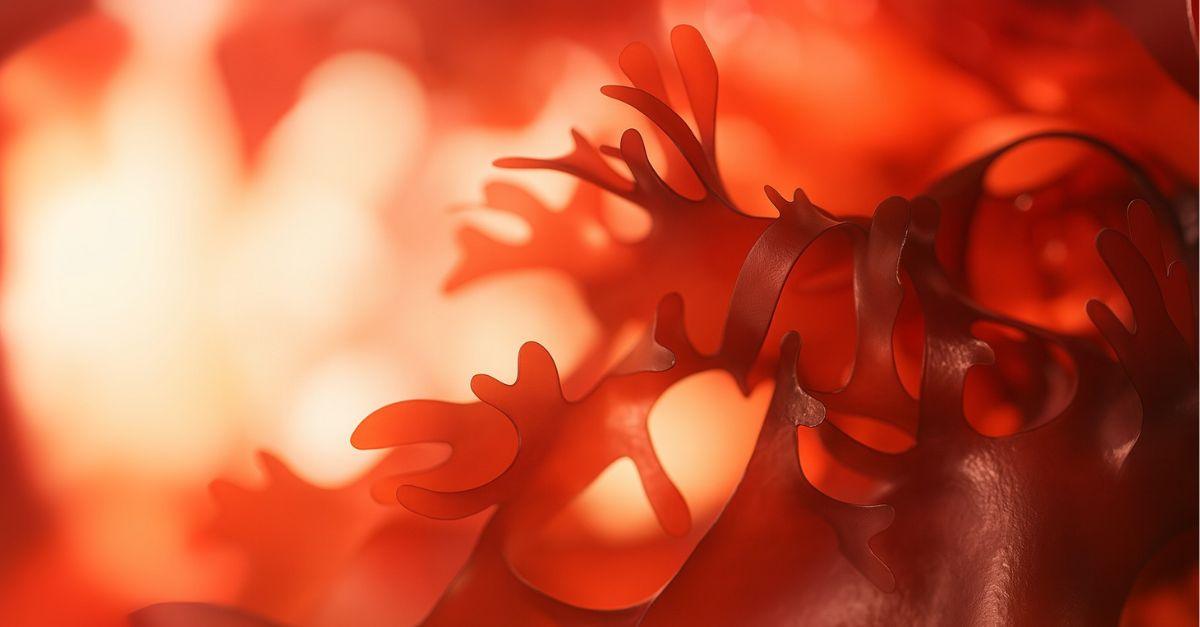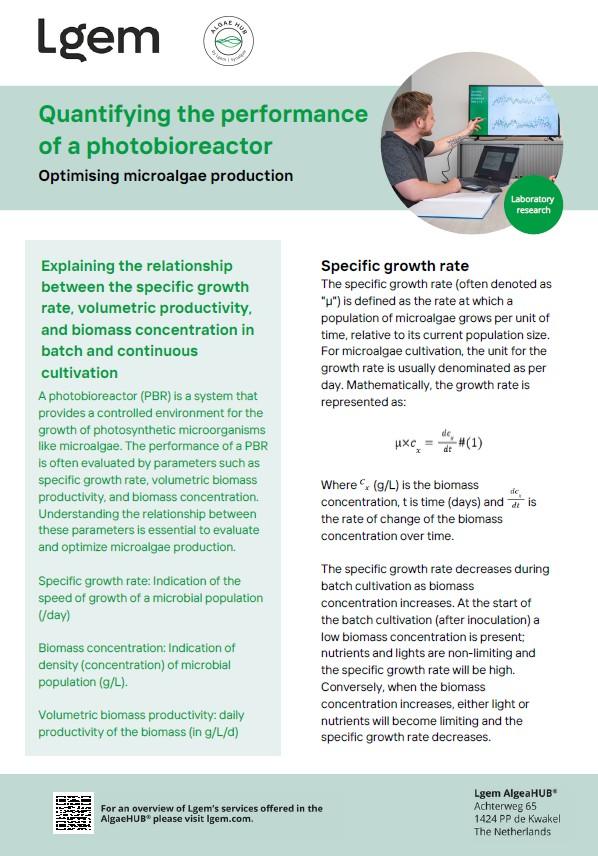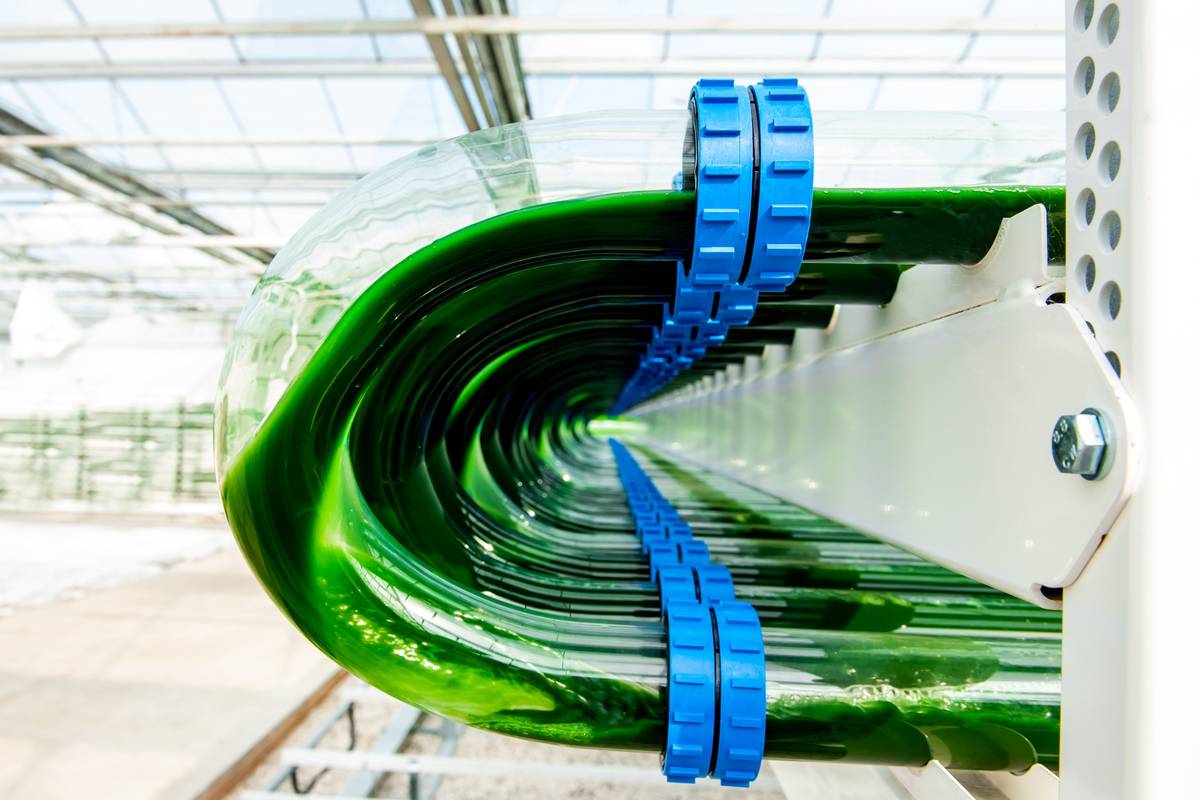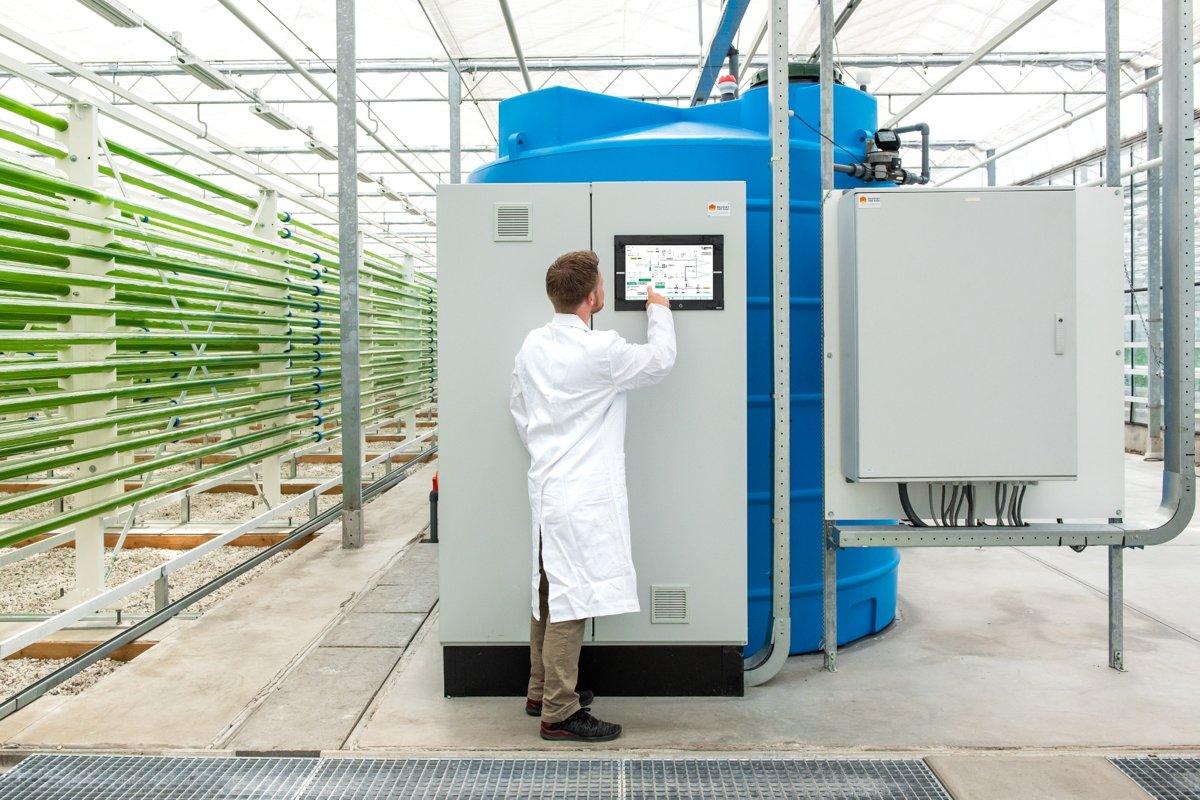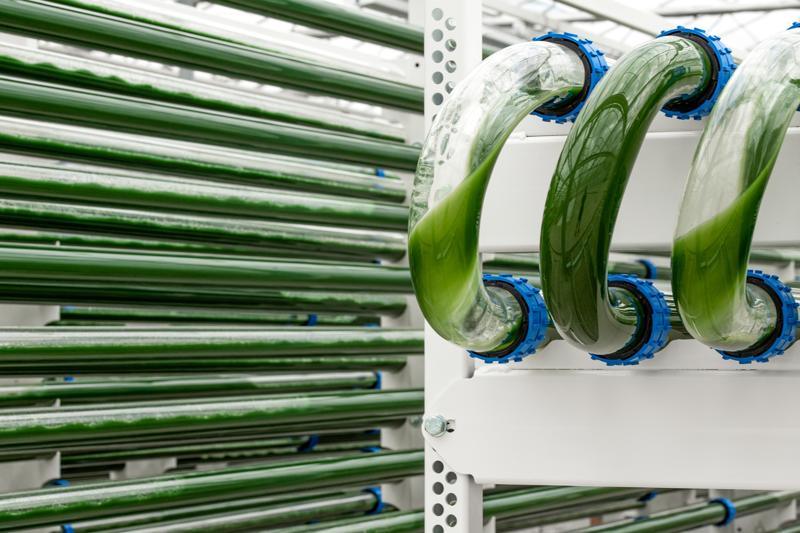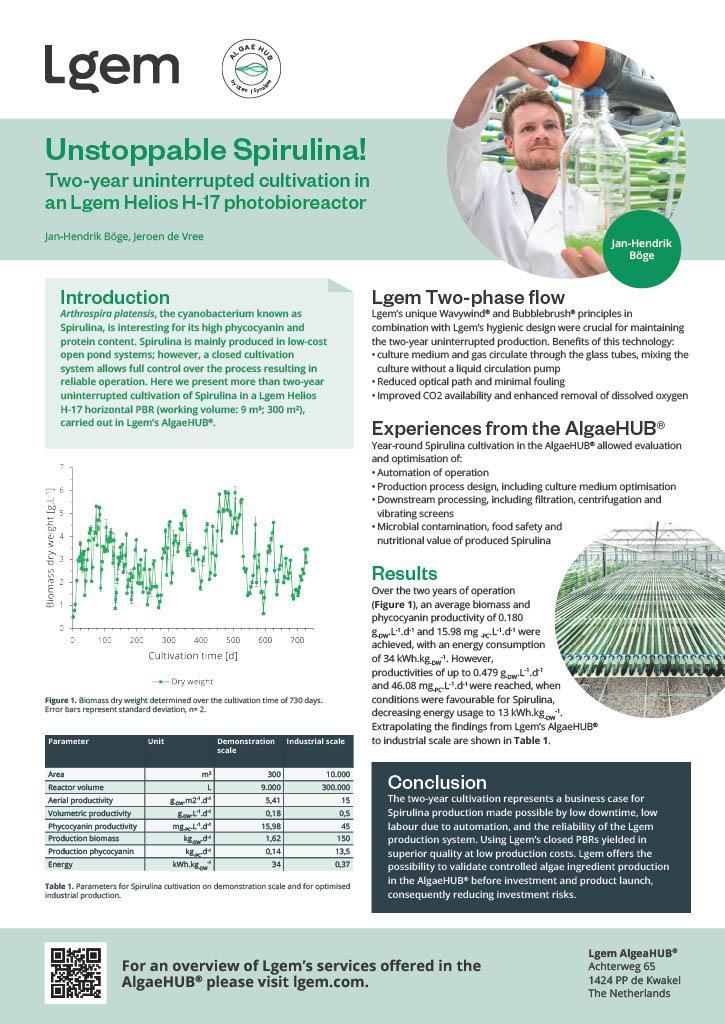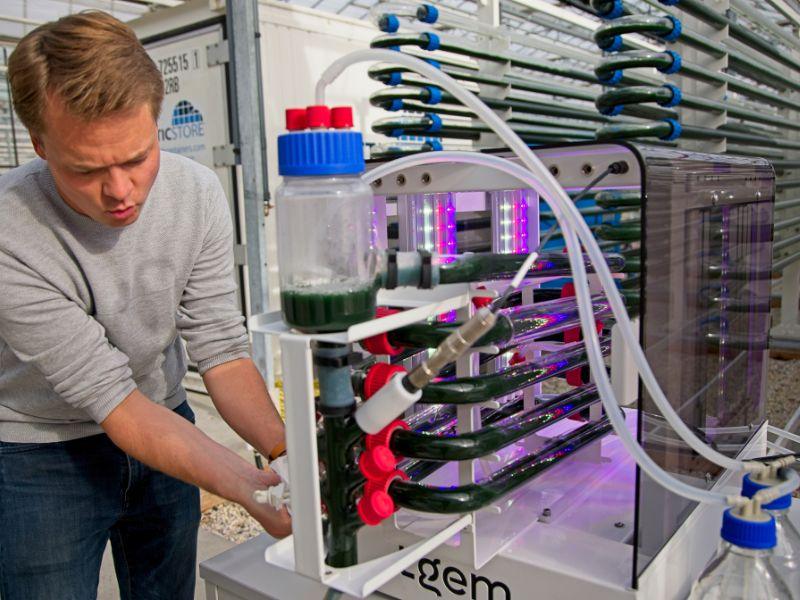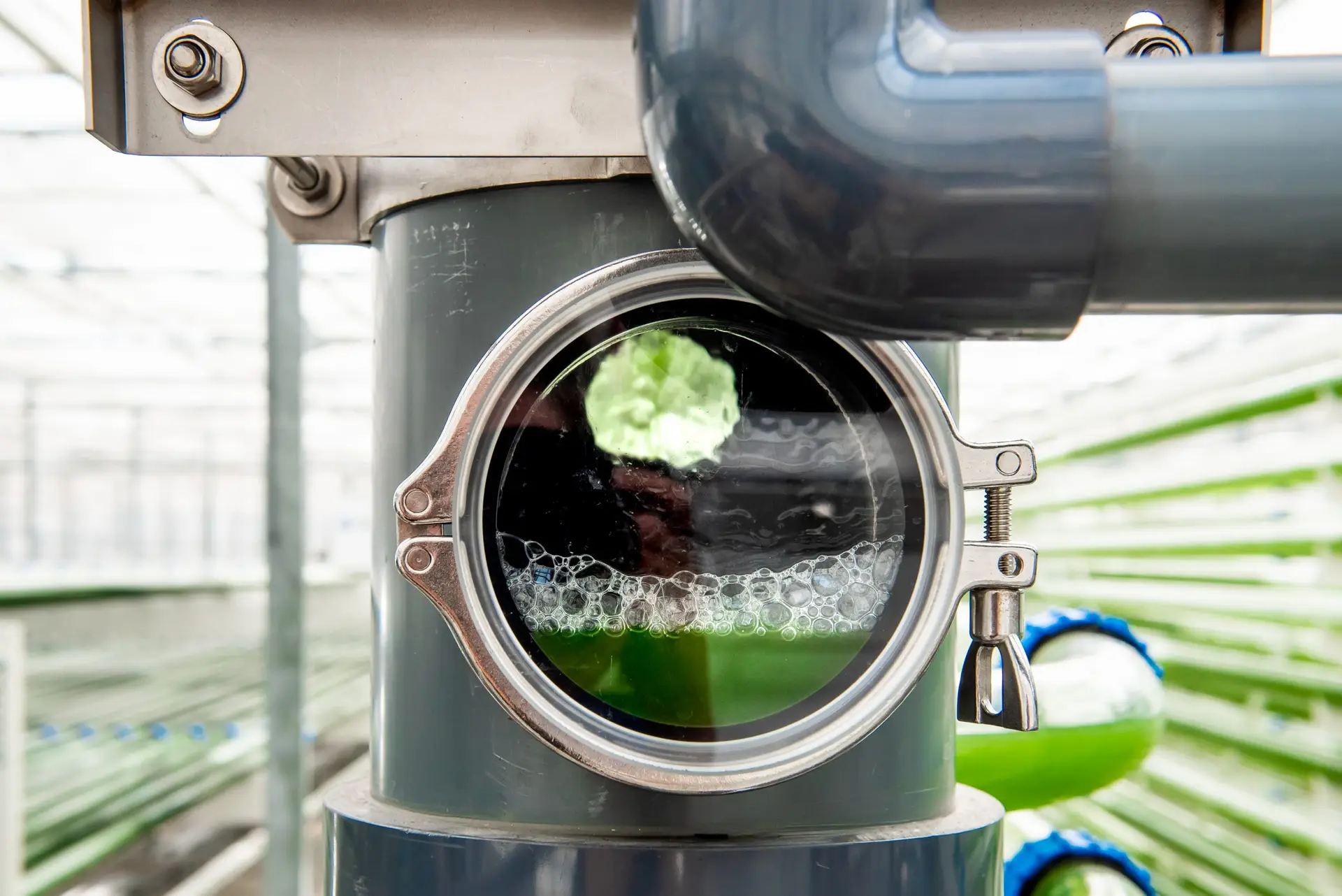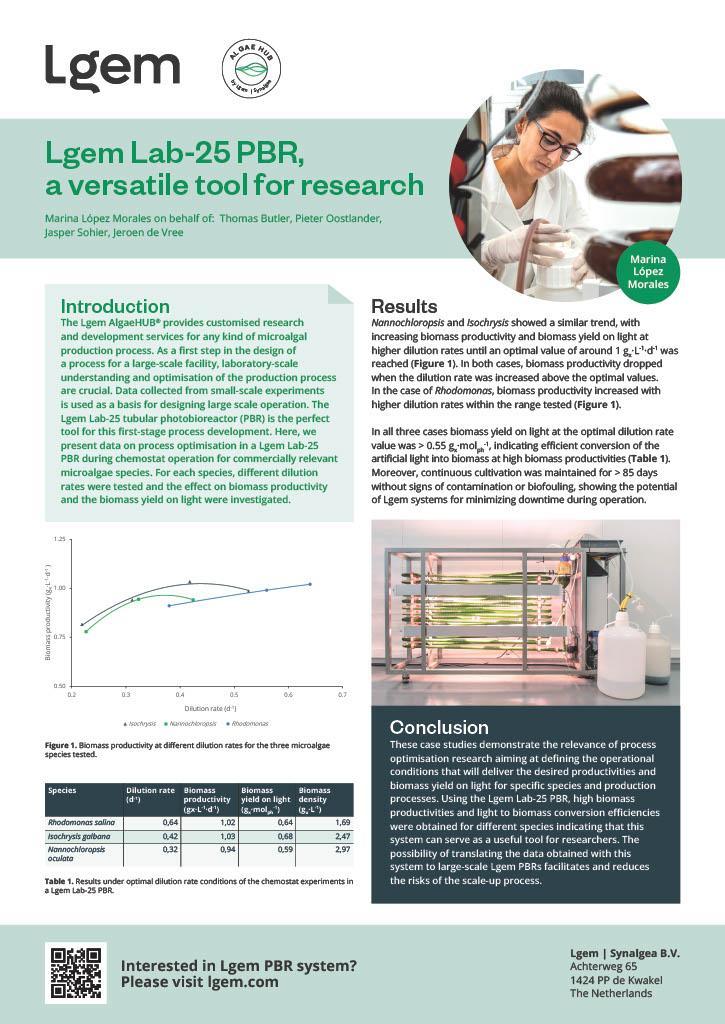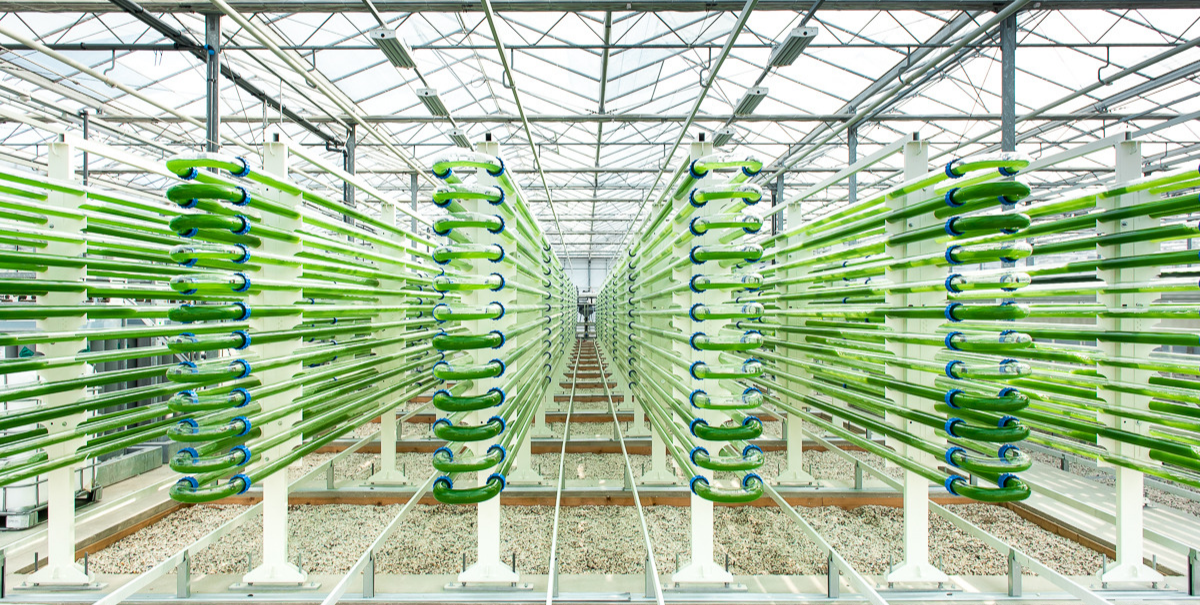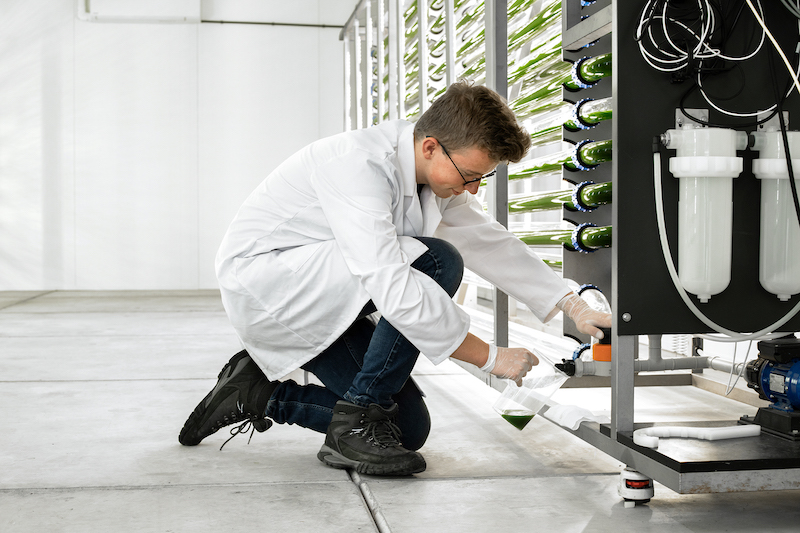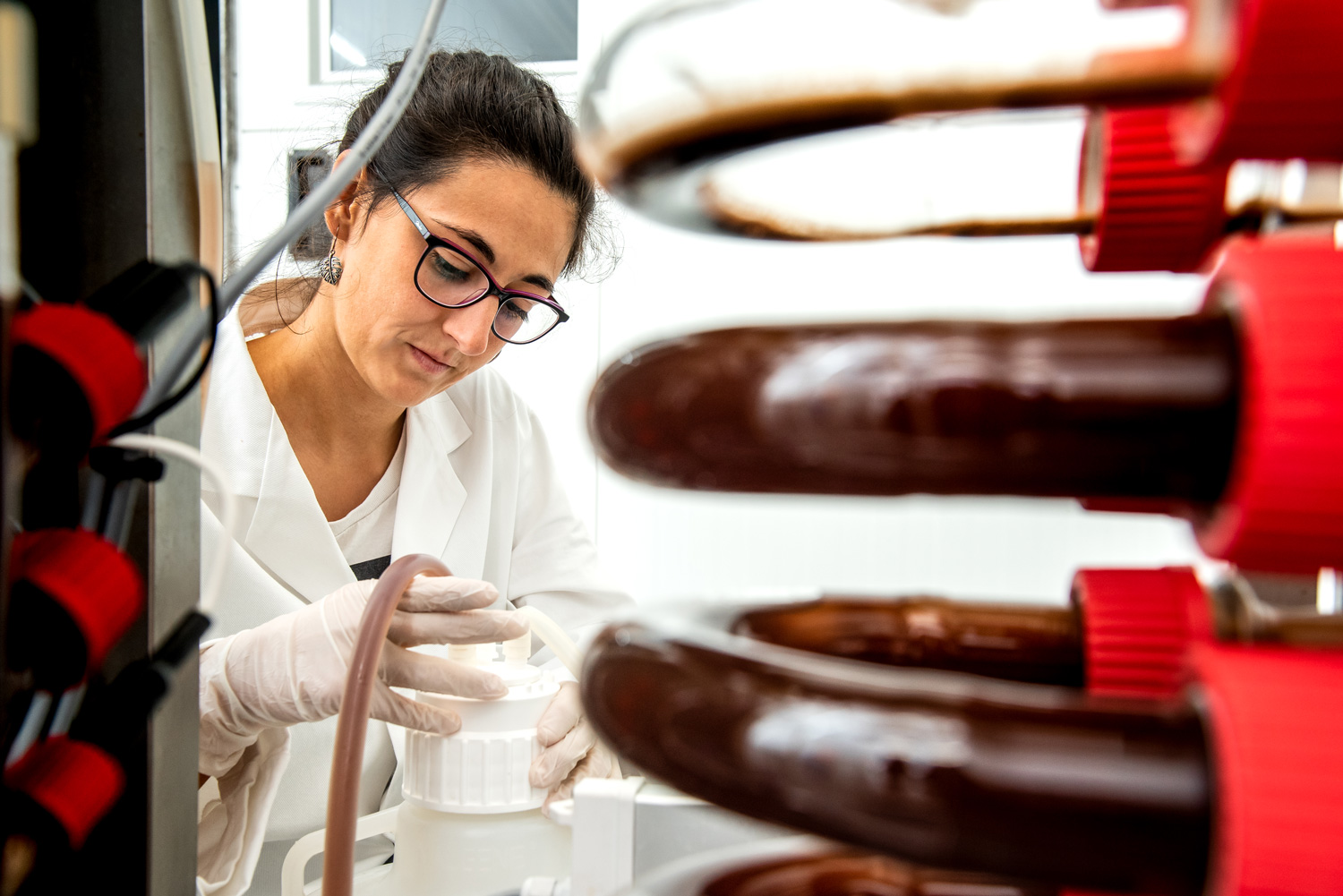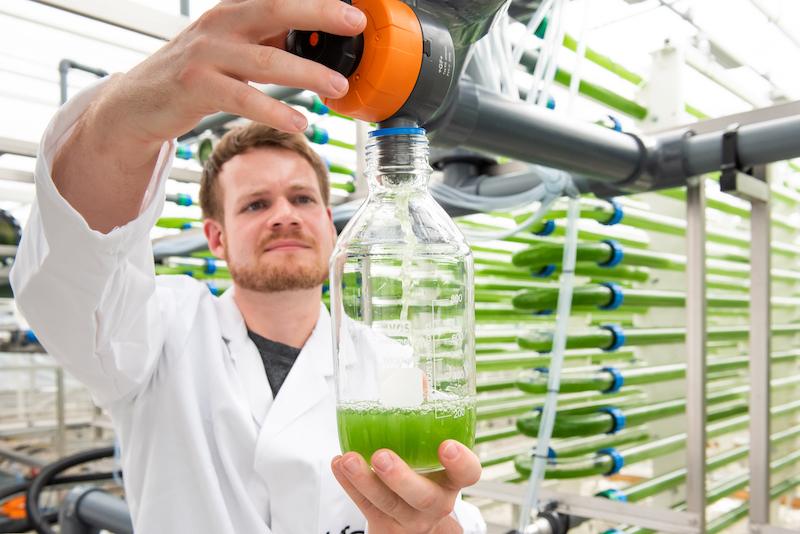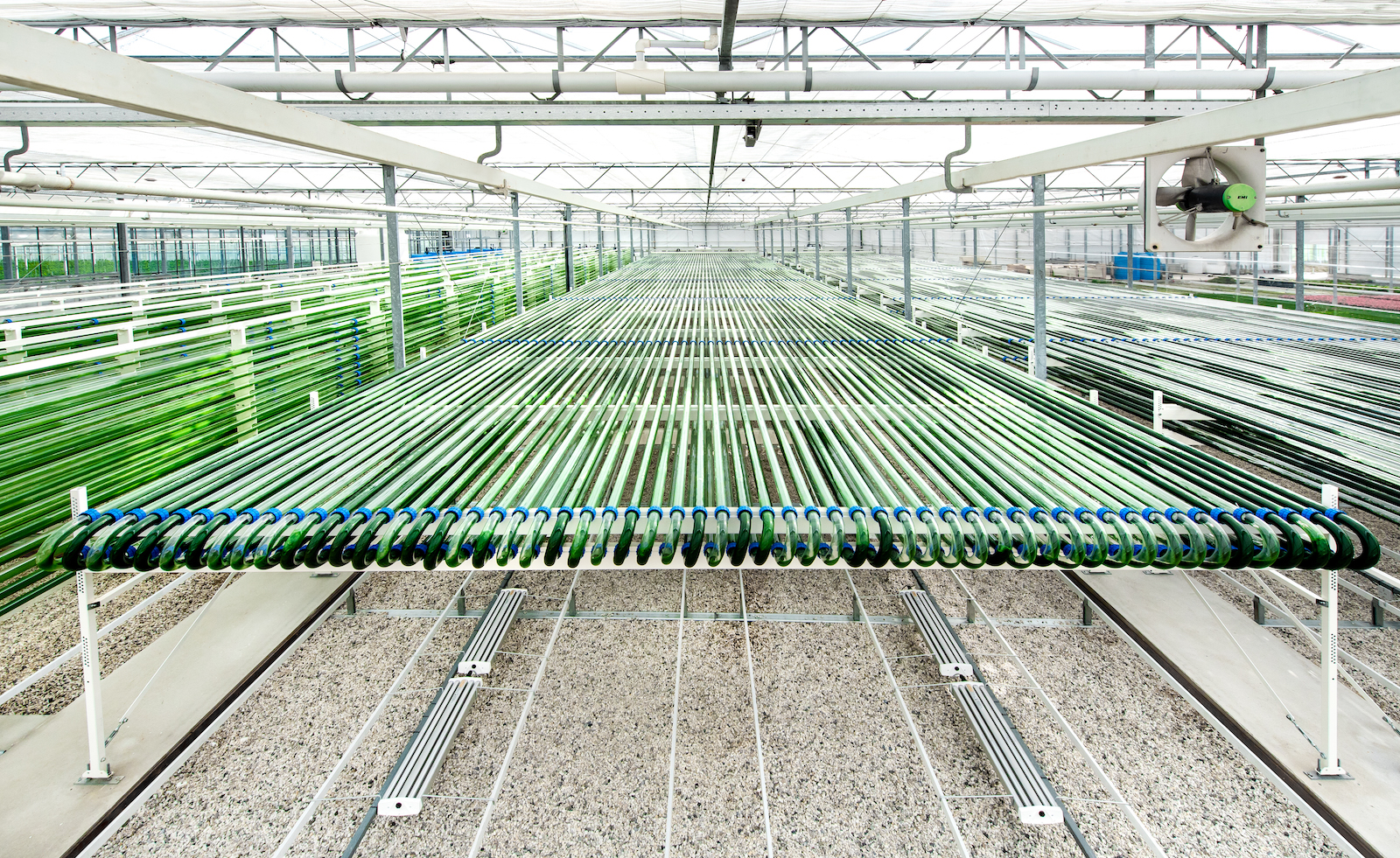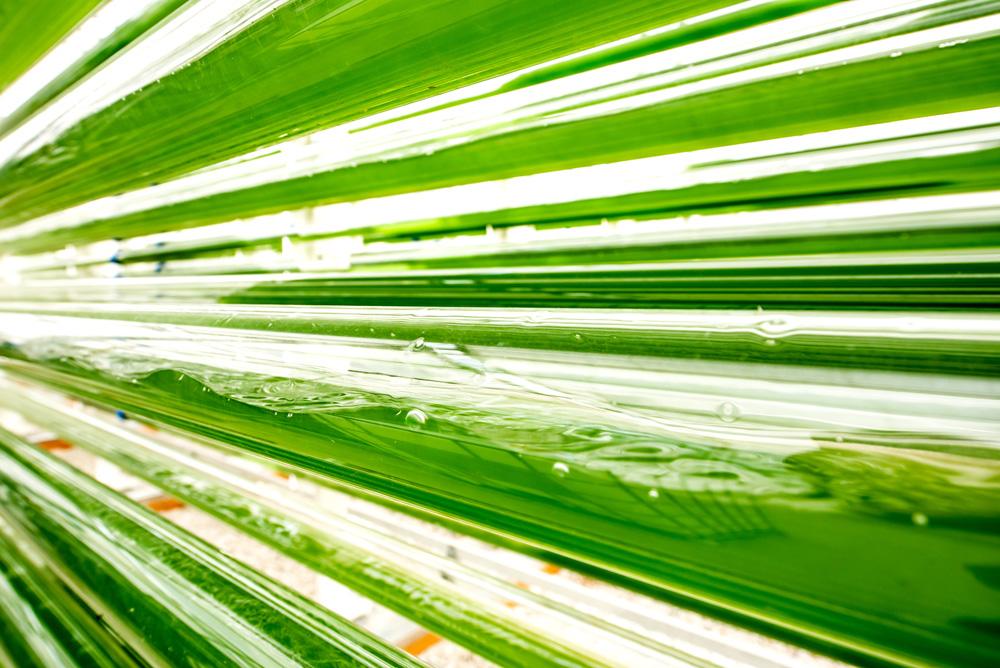Are you familiar with the Knowledge section of our brand-new website? Since the launch, we’ve published some interesting insights there. We’ve shared our approach to algae cultivation, our innovative product base and the additional services and consultancy opportunities we offer. Today, we’d like to discuss a few milestone achievements in our AlgaeHUB®. Bioprocess engineer and Director AlgaeHUB® Jeroen de Vree and technical product manager Olivier Sassen, two of our in-house specialists, will tell you about it.
Healthy cultures
Lgem offers reliable algae production systems and services straight from the heart of our business: our unique AlgaeHUB®. We can help you develop and improve your production process with our broad range of patented photobioreactor (PBR) solutions. Our user-friendly and intuitive systems make it easy for anyone to cultivate algae. “Additionally, we are proud to set the standard in hygiene as well”, states Jeroen.
“We didn’t specifically set out to break records, but the design and the technology of our solution have led us there anyway”, he goes on. “In one of the PBR systems at our AlgaeHUB®, we’ve managed to sustain a Rhodomonas salina culture for over 250 days.” That is 250 days without any stops or interruptions on account of contamination. It’s especially interesting given the fact that the species is relatively fragile and sensitive toward environmental stressors. That complicates sustained, healthy production, which makes the milestone all the more impressive. “And that’s not all”, adds Olivier. “In another system, we’ve had a Spirulina culture that we’ve cultivated for over 580 days straight. That has to be a record, as 90 days is about the industry average in open pond systems for that species.”
“We’re working on the scientific substantiation of our efforts,” says Olivier. “For now, suffice it to say that in any commercial production facility, 3 to 4 months would be more or less the standard for Spirulina.” So, around 90 to 120 days. Even if you’d generously stretch that to an average of almost 5 months, we’ve reached that target about four times over. The industry average for sustained production of Rhodomonas salina cultures is even shorter. In other words, 250 days is quite an achievement.
Cleanliness and cleanability of Lgem systems
Olivier: “Low levels of contamination yield high productivity. This is another advantage we have over open raceway ponds and other photobioreactors. Plus, if you’d place two of our systems next to each other, you can expect the very same results. That’s not what happens when you’re working with open ponds either.”
When speaking about the design of Lgem system, Olivier talks about the choice of materials, the attention to detail in the finish of weld seams, preventing dead zones and seals of mechanical couplings, the chemical resistance, and the heat tolerance. Mostly though, he is proud on the cleanability we’re able to sustain throughout the development of our PBRs.
“Another huge part is the combination of cleanliness and cleanability of Lgem systems.” Firstly, you have the design. Lgem’s PBRs are closed systems, so the culture is physically protected from contaminants. It is an effectively clean, even sterile environment, as there’s no possibility for bacteria or other algae to gain access, contaminating your culture. “Now, a closed system isn’t necessarily unique. However, we use overpressure. Think of it as an ICU room in a hospital, where overpressure is also applied. When the door opens, the air within the room pushes out anything that wishes to get in, creating a barrier.”
Choice in materials
The same approach to cleanability applies to multiple other parts of the design. “If the material you use for your tubular loops is very smooth, nothing sticks, not even biofilm. Our glass tubes have that smoothness, but so do our tanks and pipework. That’s because we use PP (polypropylene). Stainless steel has tiny surface pores, while PVC needs to be glued and these connections offer spots where bacteria and other microorganisms can accumulate. Moreover, PVC isn’t food-grade and can’t be heated, making it more difficult to clean.” ‘Food-grade’ refers to the safe and suitable material that it will not transfer harmful or toxic substances or change the composition of the culture. “Our way of applying PP doesn’t have these risks. It’s also why we use aperture taps instead of ball valves, because there is no way to keep them clean.”
“The best part of the design might be that everything is dismountable and detachable, from the tubes to the filters and the pumps. This means that if you want to start over at any point, you can dismount it all, thoroughly clean it and start fresh. Downtime is a maximum of 48 hours before you can begin a new run with a new culture.”
Wavywind and Bubblebrush
Lest we forget, our patented two-phase flow also plays a part in our hygiene standard. In our tubular PBRs, culture medium and gas circulate through the glass tubes, resulting in our unique Wavywind® and Bubblebrush® principles. The flow looks like elongated gas bubbles alternated with liquid slugs, mixing the culture without a liquid circulation pump.
Jeroen: “The combination of water and air generates a wave that is propelled by a high-velocity air stream, known as the Wavywind®. Bubbles form when the wave travels along the tube, keeping the internal tube wall from fouling; Bubblebrush®. The so-called two-phase flow improves the growth conditions for the algal cells in the culture medium. Culture broth is continuously pumped through the system, while air is pumped in at a specific rate.
Lgem’s two-phase flow results in a reduced optical path, improved CO2 availability, enhanced removal of dissolved O2 and reduced biofilm formation. Combined, they allow for higher outputs and higher uptimes for operation. Additionally, the flow is created in an energy efficient manner. A reduction of power consumption therefore accompanies the improvements of the growth conditions.
Proof of concept
Now, these milestones aren’t just a statistic. They verify what we already know. It is a confirmation of the benefits of our solutions. We have obtained data proving that extended runs times are possible, from 250 days at the lab scale up to as much as 20 months in our Helios series PBRs. “Within these runs, we have tested a wide variety of experimental settings to optimise the production window for industrial production”, says Jeroen. “Productivities of above 1 g/L/d under controlled conditions are certainly possible in our photobioreactors.” Results were obtained with fragile microalgae and non-fragile algae species. We have experience with species like Nannochloropsis gaditana, Isochrysis, Galderia, Chlorella and Skeletonema, but that list is not exhaustive.
How did we do it? “You can thank the exceptional levels of hygiene compared to any other cultivation system currently on the market,” Jeroen answers. The consistent high quality, due to the most hygienic design and industry-best mass transfer, makes Lgem PBR systems the ones to beat.
“A project in the AlgaeHUB® typically starts before the lab phase, with a desk study followed by initial lab trials. We monitor product content and biomass productivity for the evaluation of the effect of operational parameters. That includes a rough screening of microalgae culture performance on process parameters like temperature, light and cultivation media. From there on, we continue to the second stage of our experimental work on our Lab-25 PBRs. We evaluate the effect of process parameters on culture performance. At these volumes, we can prove stable operational time frames and define the operational sweet spot for your production facility. That includes operational cost as a parameter as well.”
“During our run with Spirulina, we looked for that optimum in the operational settings. For example, we test multiple levels of light and temperature. At each level, we test multiple dilution rates. That results in a certain biomass productivity. You keep as many variables as possible at the same level to see the effect of factor X.”
A major advantage of the proprietary Lgem design is the ability to adjust whatever variable during measuring and evaluating stages of process development. Since we have all the variables under control, we can do so much. Especially because the system is so clean. Being able to create ideal conditions enables us to find the sweet spot for operation.
Test before you invest
Would you like to find out what our solutions can do for your business case? At Lgem, we know investment risk reduction is a crucial success factor for investors. That’s why we offer customers the possibility to validate their business case before making significant investments. We do so right here in our cutting-edge facility.
“All of our proprietary systems are available for testing purposes. The services offered at our AlgaeHUB® allow anyone to evaluate the full range of our production units, all based on the same production principles, allowing extrapolation. R&D services offer ground-breaking possibilities, solutions and improvements to your envisioned process.
“Moreover, de-risking allows you to validate your business case on a commercially relevant scale. We produce sufficient amounts of products for developing extraction processes or product formulation trials. We simulate the full-scale operation of the designed factory and evaluate its performance even before the actual realisation of the production facility. We train our growth models to ensure that the factory or plant operates at its highest possible efficiency. Over 18 photobioreactors and various upstream and downstream unit operations are available to simulate a full-scale operation accurately”
You can find out more about the services offered at our AlgaeHUB® here.
